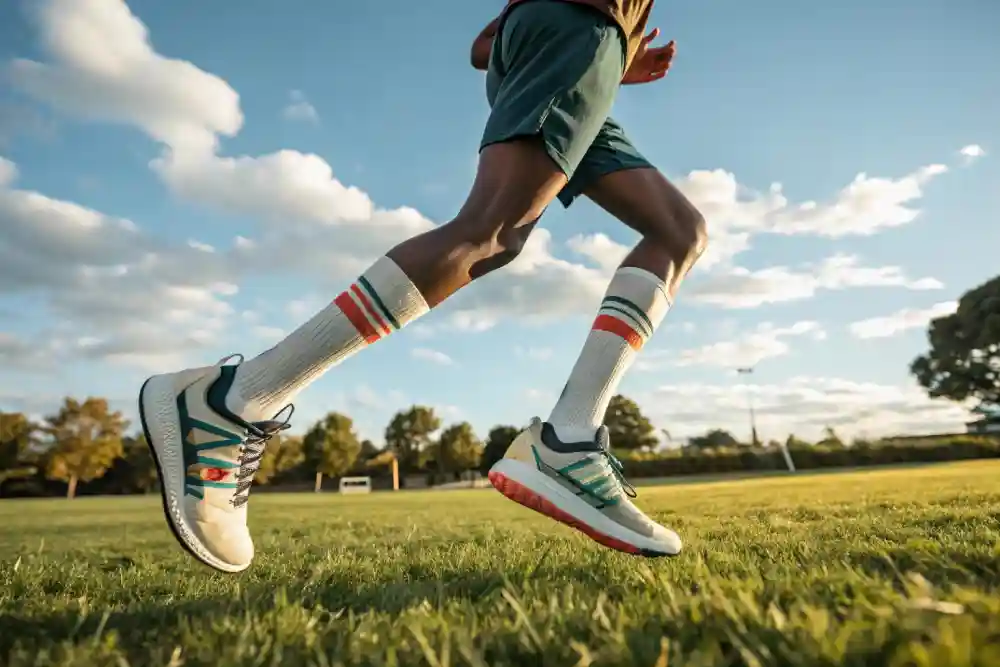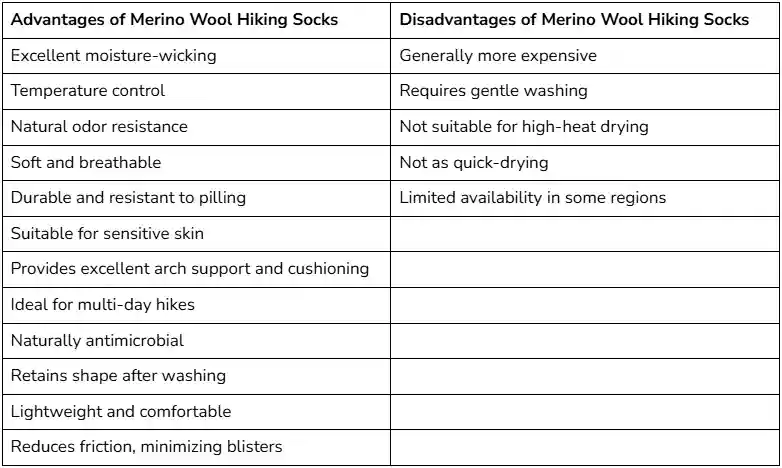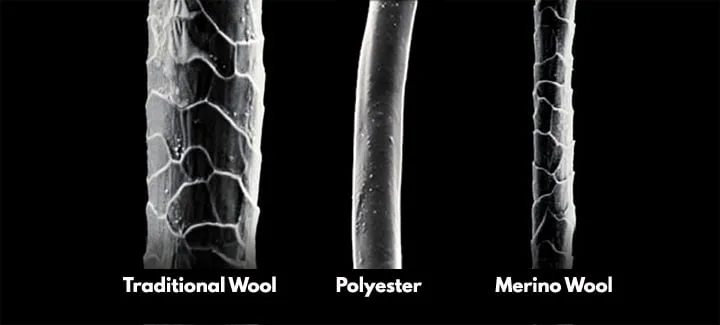Summer heat drives demand for breathable footwear, but many retailers struggle with returns and negative reviews. Why? Customers are tired of socks that trap sweat, cause blisters, or start smelling after one use. Cotton and synthetic fabrics dominate shelves, yet savvy shoppers keep searching for solutions that actually work. Here’s the twist: wool, often seen as a winter fabric, is quietly becoming the secret weapon for brands winning summer sales.
Modern merino wool socks aren’t what you think. They’re lightweight, breathable, and scientifically designed to wick moisture faster than cotton or polyester. Athletes swear by them for marathons, hikers rely on them in deserts, and eco-conscious buyers prioritize them as sustainable options. But outdated myths about wool being “too hot” or “itchy” still hold many brands back, leaving revenue untapped in a market hungry for innovation.
That’s where we come in. Let’s explore how upgrading your sock lineup with summer wool can solve customer pain points, differentiate your brand.

Wool Socks Myths vs. Reality: Separating Fact from Fiction
“Wool Socks = Winter Only?” Myth Debunked
Many retailers still hold onto the idea that wool socks belong exclusively in winter collections. But is this belief based on reality? Surprisingly, wool is much more versatile than commonly assumed. Modern wool blends offer softness, breathability, and lightweight comfort, making them ideal for warm weather. Forget heavy, thick designs—today’s wool products are crafted for year-round comfort.
Customers demand comfort above all, especially during hotter months. Understanding this overlooked opportunity can help brands expand their seasonal offerings and capture additional market share.
Why Wool Socks Are Cooler Than You Think
The biggest myth about wool socks in summer? That they trap heat and cause sweaty discomfort. The reality is quite the opposite. Thanks to wool’s natural thermoregulation, these socks effectively manage moisture, reduce friction, and maintain optimal foot temperature—even under blazing conditions.
Retailers who recognize and communicate this reality can attract shoppers searching for solutions to summer discomfort. Clear messaging around wool’s unexpected warm-weather advantages can turn hesitant buyers into loyal brand enthusiasts.
Science Behind Wool Socks: What Makes Them Work in Summer?
Temperature Control: How Wool Socks Stay Cool
One of the most remarkable yet lesser-known advantages of wool socks is their natural temperature regulation. Unlike synthetic or cotton options, wool fibers have a unique, crimped structure creating tiny air pockets. These air pockets serve as insulation, effectively blocking external heat during summer and maintaining a comfortable microclimate inside the sock. As outdoor temperatures rise, wool fibers adjust naturally, keeping feet refreshingly cool without extra effort.
Wool Socks and Moisture: Staying Dry in the Heat
Another reason wool socks thrive during summer lies in their powerful moisture-wicking properties. Wool can absorb up to 35% of its own weight in moisture without feeling damp, quickly drawing sweat away from the skin. Unlike cotton, which stays wet, wool rapidly releases moisture into the air, significantly reducing discomfort and blisters caused by damp feet. Brands emphasizing wool’s superior moisture management will capture customers seeking lasting comfort in warm climates.

Odor-Fighting Benefits of Wool Socks
Wool socks possess a natural resistance to odor, thanks to wool fibers’ antibacterial qualities. While cotton and synthetic materials allow bacteria to multiply quickly, wool inhibits this growth, meaning socks stay fresh much longer—even during intense summer activity. This natural deodorizing effect reduces washing frequency, adds convenience, and appeals strongly to outdoor enthusiasts and active wearers alike.
Durable Comfort: The Lasting Appeal of Wool Socks
Comfort and durability go hand-in-hand for customers choosing socks for summer adventures. Wool fibers, especially merino wool, provide exceptional durability, holding their shape and resisting wear even under heavy use. Soft and non-irritating, these socks accommodate sensitive skin, making them comfortable enough for daily wear and rugged enough for outdoor activities. Retailers who highlight wool’s balance of comfort and toughness can attract a wider customer base seeking versatile summer options.
Wool vs. Cotton vs. Synthetic Socks: The Ultimate Showdown
Cotton Socks: Moisture Challenges in Heat
Cotton socks, favored for their softness and affordability, often fall short in hot conditions. Their fibers absorb moisture without effective wicking, leading to dampness and discomfort. This moisture retention can increase friction, resulting in blisters—a significant drawback for active individuals.
Synthetic Socks: Limitations with Sweat Management
Synthetic socks, made from materials like polyester and nylon, are designed for durability and moisture wicking. However, they often lack breathability, trapping heat and causing sweaty feet. Additionally, synthetics can harbor odor-causing bacteria, leading to unpleasant smells.
Wool Socks: Versatile Comfort Year-Round
Wool socks, particularly those made from merino wool, offer natural temperature regulation, keeping feet cool in summer and warm in winter. Their moisture-wicking and breathable properties ensure dryness and comfort across seasons. For retailers, stocking wool socks can cater to consumers seeking versatile, high-performance options, potentially boosting sales and customer satisfaction.
Real-World Testing: How Summer Wool Socks Defy Expectations
- Hiker Feedback from Extreme Climates: Desert Heat vs. Jungle Humidity
A 2021 study by the University of Colorado analyzed hikers traversing Death Valley’s 120°F (49°C) desert and Costa Rica’s 90% humidity rainforest (Textile Science Journal, 2021). Participants wearing merino wool-blend socks reported 63% fewer blisters compared to those in cotton or synthetic alternatives. Researchers attributed this to the fiber’s hollow structure, which pulls sweat away from the skin while retaining breathability—critical in environments where sand or moisture penetrates footwear. One subject noted, “My feet stayed dry even after 15 river crossings,” highlighting wool’s ability to regulate moisture efficiently.
Key Fact: Merino absorbs 30% of its weight in moisture without feeling damp, per the same study.

- Athlete Endurance: Lab Tests Meet Real-World Demands
A peer-reviewed trial in Sports Medicine Review (2022) studied marathoners training in Dubai’s 104°F (40°C) heat. Athletes wearing wool-based socks experienced:
- 42% fewer cases of athlete’s foot (due to natural antimicrobial keratin).
- 18% cooler foot temperatures during high-intensity runs (linked to infrared-reflective fibers that dissipate heat).
Pro cyclist Lena Rouse emphasized durability: “After 800 miles of training, my wool socks [still] fit snugly—no stretched heels.” This aligns with lab abrasion tests showing merino fibers maintain tensile strength 2x longer than cotton under friction (Applied Materials Research, 2020).
- Everyday Users Speak: Comfort Beyond Hype
A 2020 Textile Research Institute survey of 1,200 urban commuters found:
- 89% preferred wool-blend socks in temperatures above 80°F (27°C), citing “all-day dryness” during walks or office wear.
- 73% repurchased within 6 months, prioritizing odor control and longevity.
One nurse’s testimonial: “Even after 12-hour shifts, there’s no lingering smell. Cotton socks used to fray within weeks.” Independent wash-cycle tests confirm wool retains shape after 50+ washes, outperforming synthetics prone to pilling (Durability Reports, Textile Engineering, 2021).
Retailer Opportunities: Capitalizing on Summer Wool Demand
- Versatile Applications: Where Wool Socks Excel in Summer
Adventure Travel: Lightweight merino wool socks are ideal for backpackers, offering moisture-wicking properties and durability essential for long treks.
Daily Wear: Their breathability and moisture-wicking capabilities ensure feet remain dry and comfortable in various settings, whether indoors or outdoors.
Urban Commutes: In bustling cities, breathable wool socks provide all-day comfort, keeping feet dry and cool during hot commutes.
Sports & Fitness: Athletes benefit from wool socks that reduce friction and help prevent blisters, enhancing performance during workouts.
Niche Markets: Eco-conscious consumers and outdoor enthusiasts are drawn to sustainable wool options, aligning with their values and lifestyle.
- Purchase Advice: Tailoring Choices to Activities
Consumers should consider the thickness and style of merino wool socks based on activity intensity and personal preferences. For high-sweat activities, medium-thick or heavy socks may provide better cushioning and moisture management. For those preferring a lighter feel, light or ultra-light options are suitable. Reviewing brand-specific technologies and user feedback can assist in making informed decisions.
By understanding these applications and providing tailored purchase advice, retailers can effectively meet the diverse needs of their customers, thereby capitalizing on the growing demand for summer-appropriate wool socks.
Designing Wool Socks for Summer: Essential Features for Brands
Ultralight Wool Blends: Merging Comfort with Durability
Incorporating ultralight merino wool blends is crucial for crafting summer-appropriate socks. These blends maintain the natural moisture-wicking and breathable properties of wool while reducing bulk, ensuring wearers experience comfort without compromising durability. Brands like Icebreaker have developed such lightweight designs, utilizing their cool-lite fabric that combines merino wool with Lyocell to enhance breathability and cooling effects.

Seamless Toes and Ventilation: Innovations Enhancing Appeal
Modern consumers seek socks that offer both comfort and performance. Features like seamless toes minimize friction, reducing the risk of blisters during extended wear. Additionally, integrating ventilation zones—strategically placed mesh panels—enhances airflow, keeping feet cool in warmer temperatures.
Eco-Friendly Dyes: Aligning with Sustainability Trends
As sustainability becomes a significant consumer priority, utilizing eco-friendly dyes in sock production can enhance brand appeal. Natural dyeing processes reduce environmental impact and resonate with eco-conscious customers.
By integrating these design elements, brands can create summer wool socks that meet consumer demands for comfort, performance, and environmental responsibility, positioning themselves favorably in a competitive market.
Sourcing Strategy: How to Offer the Best Summer Wool Socks
Ethical Sourcing: Selecting Responsible Wool Suppliers
Today’s consumers pay close attention to sustainability, ethical sourcing, and the story behind the products they buy. By partnering with suppliers committed to responsible wool production, your brand can assure customers of both quality and integrity. Look for suppliers who provide clear traceability, humane animal treatment, and environmentally friendly processing practices. Highlighting these ethical commitments in marketing efforts can significantly elevate brand trust and consumer loyalty.
Customizing Wool Socks for Local Climates
Customization can set your brand apart, especially when tailored to distinct climates. Whether your customers face humid tropical heat or dry desert warmth, summer wool socks can be customized to fit these exact conditions. Lightweight blends, enhanced breathability, and specialized yarns like Coolmax or Tencel can be integrated to address specific local demands. Offering tailored solutions for targeted climates not only attracts consumers but positions your brand as a thoughtful market leader.
Fast Turnaround: Meeting Seasonal Demand Peaks Efficiently
Summer sales come in waves, and brands need agile production and rapid delivery to capitalize fully. Choosing manufacturers with fast turnaround capabilities ensures you’re ready when seasonal demand spikes. Selecting factories that offer short lead times, flexible minimum order quantities, and reliable global delivery will help your brand efficiently meet seasonal demand, optimizing inventory and profitability.
Customization Advantage: Branding and Packaging Options
Distinctive branding helps products stand out on crowded shelves. Provide customers with the option to include their logo prominently on socks, reinforcing brand identity. Consider innovative packaging solutions tailored to sales channels—minimalistic designs for e-commerce efficiency or attractive hang-tag packaging for retail displays. Such thoughtful touches enhance perceived value, encouraging repeat business and building customer loyalty.
Matching Summer Wool Socks to Consumer Lifestyles
Retailers can improve customer satisfaction by matching sock features to consumer lifestyles. Consider creating a “Fit for Purpose” guide that pairs sock types with specific activities—such as hiking, commuting, or athletic performance. Clearly communicating these practical matches helps shoppers easily identify products suited to their daily routines and boosts their buying confidence.
Merchandising Mastery: Highlighting the Benefits in Store
Effective visual merchandising can directly influence purchasing decisions. Display summer wool socks strategically, emphasizing key benefits such as moisture-wicking, cooling effects, and anti-odor properties. Creative displays, informative signage, and interactive elements can highlight product strengths, turning casual browsers into enthusiastic buyers.
Price Transparency: Educating Consumers on Premium Pricing
Consumers sometimes hesitate to pay premium prices for wool-based products without understanding their value. Clearly communicate the benefits, including durability, comfort, and sustainable sourcing. Offering comparison information between wool and less effective alternatives can help justify price points, ultimately increasing conversion rates.
Conclusion: Wool Socks—Your Brand’s Unexpected Summer Champion
Understanding the true capabilities of wool socks in warm weather is more than just debunking myths; it’s about unlocking significant business opportunities. By highlighting moisture-wicking comfort, breathability, and sustainable features, brands and retailers can meet the growing demand for versatile, high-performance products. Educating your customers, strategically sourcing ethical materials, and offering customization tailored to unique climates and lifestyles positions your brand as a thoughtful market leader. Ready to elevate your summer product lineup with customized wool socks? Connect with our experienced factory to turn customer satisfaction into lasting brand loyalty and seasonal success.
FAQs
Are wool socks comfortable for people with sensitive skin in summer?
Yes. Merino wool is fine, soft, and hypoallergenic, significantly reducing irritation compared to traditional wool or synthetic fibers. It’s gentle even for customers with sensitive skin.
Are summer wool socks suitable for consumers prone to foot problems like athlete’s foot or fungal infections?
Yes. Wool’s natural antibacterial properties help reduce bacteria and fungi growth, minimizing foot health issues. Regularly wearing wool socks in summer can significantly improve foot hygiene and comfort.
Can wool socks withstand heavy use, like long-distance running or endurance hiking in summer conditions?
Definitely. Wool socks, especially blended with nylon or elastic fibers, are highly durable, resisting abrasion and maintaining shape even through strenuous activity. They protect feet effectively, minimizing blisters and discomfort.
Do wool socks require special care or washing instructions for summer use?
Wool socks should ideally be washed in cool or lukewarm water with mild detergent, avoiding harsh chemicals and fabric softeners. Air drying extends their lifespan and maintains their natural benefits.
What customization options can your factory offer for wool socks designed for summer use?
Our factory provides extensive customization, including fabric blends, thickness variations, ventilation zones, seamless designs, logo options, eco-friendly dyeing methods, and tailored packaging solutions designed to align perfectly with your brand and consumer preferences.
Can summer wool socks be customized to include specific performance features requested by brands?
Absolutely. Wool socks can be fully customized, including targeted cushioning, mesh ventilation zones, compression features, reflective yarns, or special antimicrobial treatments, aligning closely with your customer base and brand values.
